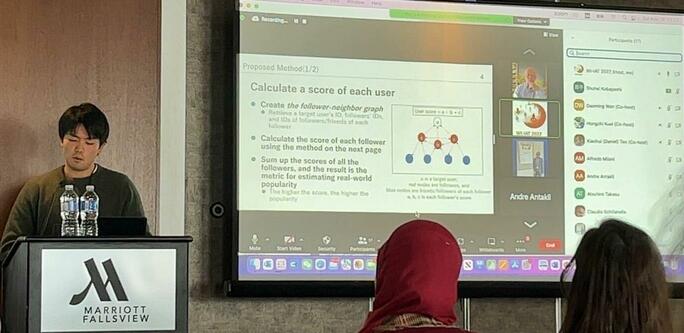Ruide Li and Shuhei Kobayashi presented their research at the IEEE/WIC/ACM International Conference on Web Intelligence and Intelligent Agent Technology (WI-IAT). This year, the conference was held in a hybrid format in Niagara Falls, Canada.
The place where we had breakfast had a great view of Niagara Falls.

Although the event was hybrid, a significant number of participants joined online, and the number of in-person attendees was relatively small. As a result, the conference was held in a much more compact venue compared to pre-pandemic years.
Unfortunately, Ruide also had to present online. Meanwhile, Shuhei gave his presentation on-site, as shown in the photo below.

In the photo above, you can also see that the presentation was being streamed via Zoom, allowing remote participants to attend virtually.
Ruide’s research focuses on active learning in machine learning. Active learning is a technique where, instead of simply learning from a given dataset, the model actively selects which data to learn next. A common approach in active learning is to prioritize data points that are most difficult for the current classifier to classify—typically those near the decision boundary.
In contrast, his method is designed for text classification and estimates the informational value of each text data item using various measures. The model then prioritizes learning from texts that are likely to contain more informational value.
On the other hand, Shuhei’s research focuses on estimating the real-world popularity of social media users. While follower count is often used as a metric for social media popularity, it can be influenced by various factors and does not always accurately reflect a user’s real-world popularity.
To address this issue, the study used university beauty pageants (Miss/Mister contests) as a case study. Instead of predicting the contest winners solely based on the number of followers, the proposed method achieves higher accuracy by incorporating follower network structures—considering not just the number of followers but also the community structure of those followers.
The photo below was taken up close near the falls. It almost looks like CG, but even when seeing it in person, its massive scale feels so surreal that it actually does seem like CG in a way.
